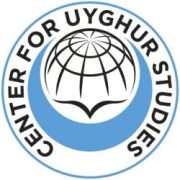The introduction of Islam into Chinese territory dates back to the 7th century. In the periods following the first encounter with Muslim merchants, they took a key position in China’s trade. Relations between Muslim states and China developed as trade-indexed until the 12th century. A large number of Muslims settled in China. Muslim communities that assumed mercenary duties during the Yuan-Mongol Dynasty also experienced no pressure or problems during the Ming period. Starting from the period of the Manchur-Qing, when “na- tionalist” feelings were high, pressures against Muslims started to intensify during the 17th century. The first attempt to assimilate Sinicization or Sinifi- cation took place during these years. The freedom of Muslims was restricted, and newly arrived Muslim immigrants were forced to settle in the lands along the western border occupied by the Qing. In the following years, as a result of the invasion of the Qing emperors towards the west, many regions where Mus- lims lived were captured.
Today, although the PRC’s anti-Islamism, which has imposed genocide on Muslim Uyghur and other Turkish communities in East Turkistan, is direct- ly evaluated concerning the Communist doctrine, historically it is based on Han nationalism during the Manchu-Qing dynasty. As it is noted by Haiyun Ma, who authored the work “Anti-Islamic Movements in China” at the Hud- son Institute, the empire expanded westward and Han Chinese were forced to migrate to the regions where Hui Muslims lived. In the continuation of these migrations, the ideology of nationalism developed among the Han Chinese, and the Han Confucian opinion leaders began to denounce Islam and Muslims. In parallel with the strengthening of the reputation of the Han Chinese in the empire, the practice of religious duties of Muslims in daily life was tried to be marginalized. This situation is seen in the reflection of the anti-Hui opposition of the Confucian language and geography scientist Gu Yanwu, who lived in the 1600s. Shandong Governor Chen Shiguan, who had a similar view to Gu and also lived in the 17th century, saw Islam as a “threat” and attacked Qing rulers who viewed other Muslims with tolerance. Another Han Confucian, Wei Shu, wanted Muslims to be forcibly expelled from China.
The 18th century in China was a period in which attempts were made to fully control the regions where Muslims lived and resistances against these attempts were observed. The Yunnan region, one of the regions where Muslims lived, is one of the furthest points that the Qing Dynasty tried to control in the southwest. Kunming, the largest city in the region, was one of the important commercial centers at that time. The central administration did not intervene here much until the reign of Emperor Yongzheng and this region was adminis- tered through governors. Another reason why the region is important for Chi- nese emperors is the copper mines in the region. The vitality of the economy caused a large number of people to migrate there. But over time, the balance between the Han Chinese and other societies had deteriorated. The tension that emerged with the abolition of the general governorship system by the emperors turned into bloody events. After the massacre in which 8 thousand Muslims were killed in 1856, the region was in complete chaos. The central government, on the other hand, prioritized keeping the copper mines safe and to prevent the intervention of neighboring countries. After the collapse of the empire in 1911, in the years when the republic was first established, Muslim peoples were regarded as equal like other societies. Although Han Chinese nationalism continued to rise until the Communist Party came to power, there were fewer attacks against Muslims during this period.
During the Cultural Revolution, some of the most disgraceful acts carried out by the Communist Party led by Mao involved the suffering of Muslims. Throughout the cultural revolution that started in 1966, having a Muslim identity was considered a crime. During this so-called revolution; copies of the Quran were burned, mosques were damaged, places of worship were turned into pig pens, religious scholars were forced to eat pork in front of the community, and all kin- ds of insults, persecution, and torture were applied to people to force them to give up their beliefs. As a result of Mao’s view of religious beliefs as superstition, Muslim societies were subjected to great persecution. Those who wanted to protect their belief in Islam were tortured, imprisoned and some were killed. At that time, when learning about religion was considered a major crime, all books on Islam were banned, except for the Quran. Since the cultural revolution aims to heathenize people and destroy their spiritual values, the culture of respect for mother and father, one of the main pillars of Islam, was intended to be eliminated. Students were given instructions to insult and humiliate their parents in front of everyone.
Copyright Center for Uyghur Studies - All Rights Reserved
